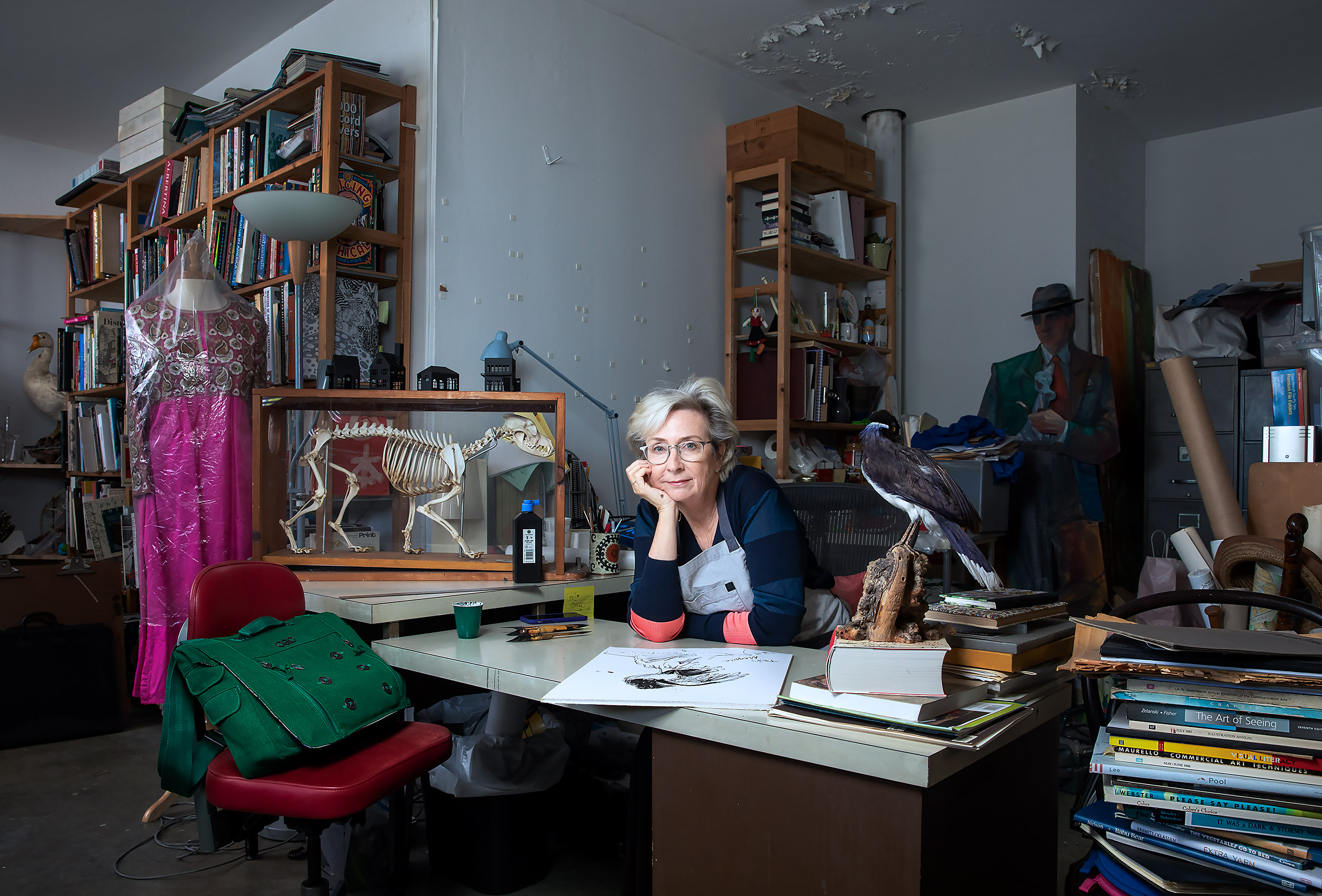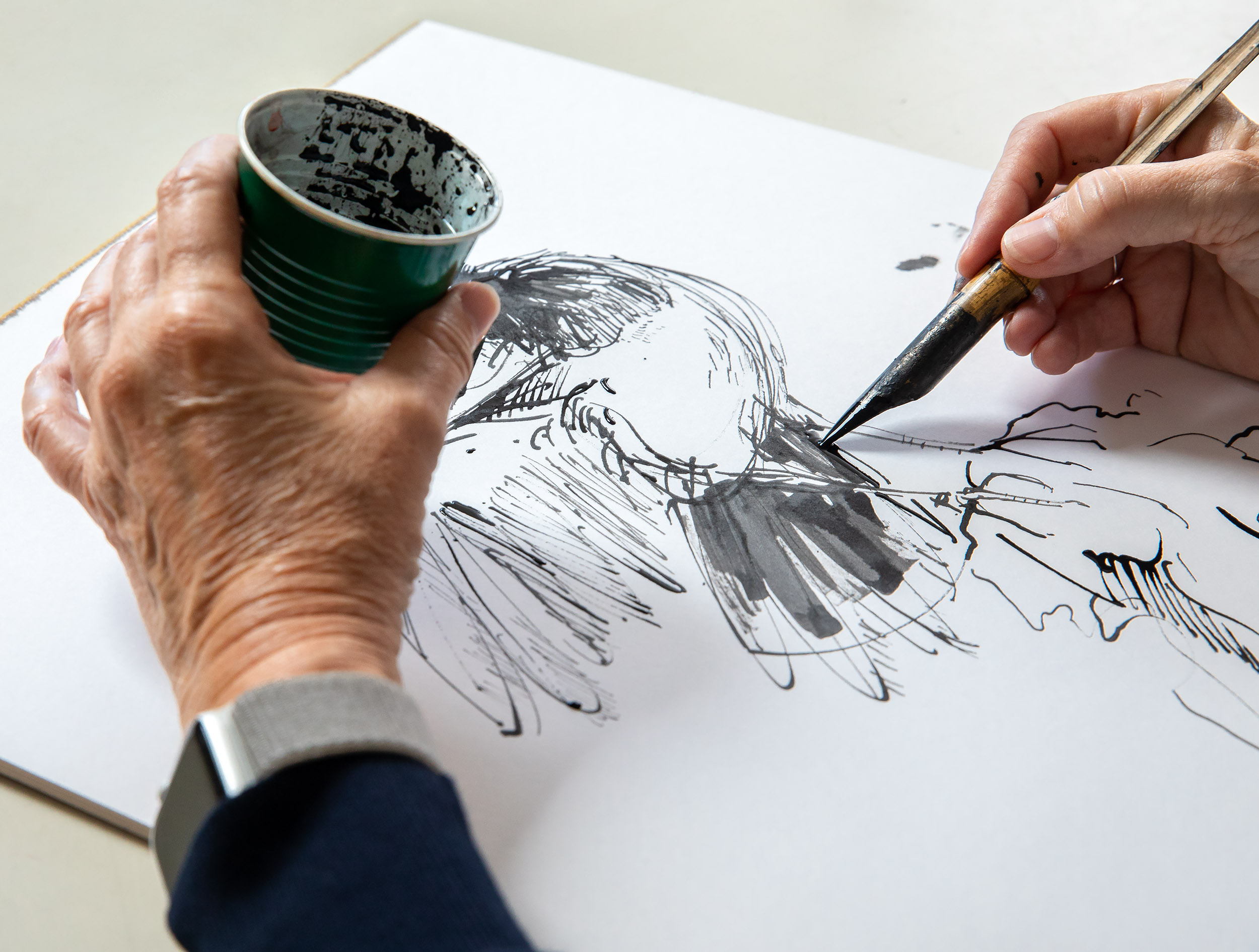The Drawing Power of Teaching
When Forrest Gump decided his running days were over, he turned to a group of unexpected followers and told them he was tired and wanted to go home. The stunned crowd then stepped aside to allow the curiously bearded man to walk away.
In the highly-popular movie, Gump seemed to be something of a prophet during his three-year trek, a man who attracted disciples to an unknown cause. He looked the part, too. He had long hair, a scraggly beard and a gray-and-yellow poncho that resembled a biblical tunic.
What Gump wore in that defining theatric moment was Professor Robin Richesson’s idea. She served as costume illustrator for the movie, and the producer asked her to draw something that would make Gump look like a religious leader.
“They gave me a picture out of a children’s Bible story of John the Baptist, and he was wearing a fur loin cloth,” Richesson said. “Nothing anyone would be wearing now or running around in across the country, but we knew what he meant.”
She instead sketched a free-flowing rain poncho, a garment modern enough to make sense within the film’s setting, but also evocative of the world that existed 2,000 years ago. And it’s just one of several of the movie’s costumes she had input on.
In addition to “Forest Gump”, Richesson, a professor of illustration and animation in the School of Art, has collaborated with other films’ costume designers to help visualize their designs through extensive research of time periods and styles.
Her costume illustrations include Steven Spielberg’s “War of the Worlds”, “Polar Express”, “The Curious Case of Benjamin Button”, and the Academy Award-nominated “If Beale Street Could Talk.” But Richesson’s talents aren’t solely defined by sketches of stitches and seams. She also has worked as a storyboard illustrator on numerous movies and television shows. Among her storyboard credits are “American Beauty”, “Jack Reacher”, “MadMen”, “Grace and Frankie” and “G.L.O.W”




Yet the bulk of her film and television work can be found in storyboards, sketches of scenes from which the director, producer and actors take their cues. And depending on the movie or television show, Richesson will research time periods, animal behavior and special effects, such as explosions.
She starts the storyboard process by sitting with the director and talking through scenes. Instead of taking notes, she does rough sketches of what she perceives will happen, giving them a creative blueprint.



“Others feel nervous drawing on the spot, but I don’t,” she said. “I sketch these little drawings; visual ways of taking notes. They (directors, producers) look over and see what I’m doing and they say, ‘Yeah that’s right.’
“Then I take it home and clean it up into something people can understand. I take it to the director for more notes, and then when he or she thinks it looks like something they want to communicate, it gets used for all kinds of things.”
The task can be challenging, because every shot changes. As she explained, one shot can be several panels of drawings or a lot of little sketches, but in the end, they help everyone involved communicate.
“Showing them a picture is faster than telling them,” Richesson said.

Richesson graduated from Cal State Long Beach in 1982 with a Bachelor of Fine Arts and in 1995 with a Master’s of Fine Arts. She intended to become a children’s book illustrator, but finding a job outside of New York proved difficult.
That’s when a college friend suggested she try the entertainment field. Hollywood, after all, was right in her backyard. Despite her knack for life drawings, she said she didn’t take him seriously at first.
“I didn’t think it was something I would do, but then he gave NBC my name and I couldn’t really turn it down,” Richesson said. “I tried it and I started liking it.
“I think the way I draw I was suited to it. I love life drawing … and a lot of my instructors were very encouraging to me about my life drawing. So, I kept on doing that.”
Having worked in television for 12 years, she has helped produce commercials for such brands as 7-Up and Duracell, as well as shows for NBC, CBS and Fox Television. Getting into the film industry proved more difficult, however, because of the exclusivity of unions.
Nevertheless, one producer took a chance on Richesson and gave her a job sketching storyboards for “Flipper,” which entailed learning dolphin behavior.
Richesson’s work is well-known internationally, having been recognized 20 years ago as one of the “100 Most Creative People in Hollywood” by Entertainment Weekly.
“I’ll admit that at the end of 12 years doing storyboards for commercials, I was burned out,” Richesson said of the repetitive nature of the business. She then looked into doing movies.

Today, she shares her passion with her students. Graduating senior Caroline Kvass said the professor uses live, costumed models in her sketching classes and encourages students to experiment with various mediums, such as drawing with bamboo reeds. Kvass said the bamboo “pens” were messy but forced her to learn how to make calculated marks and lines.
“Robin helped us capture the model by teaching us methods for finding the figure under the clothing,” Kvass said. “Personally, Robin helped me a lot with showing a stronger sense of form and structure in my drawings.”